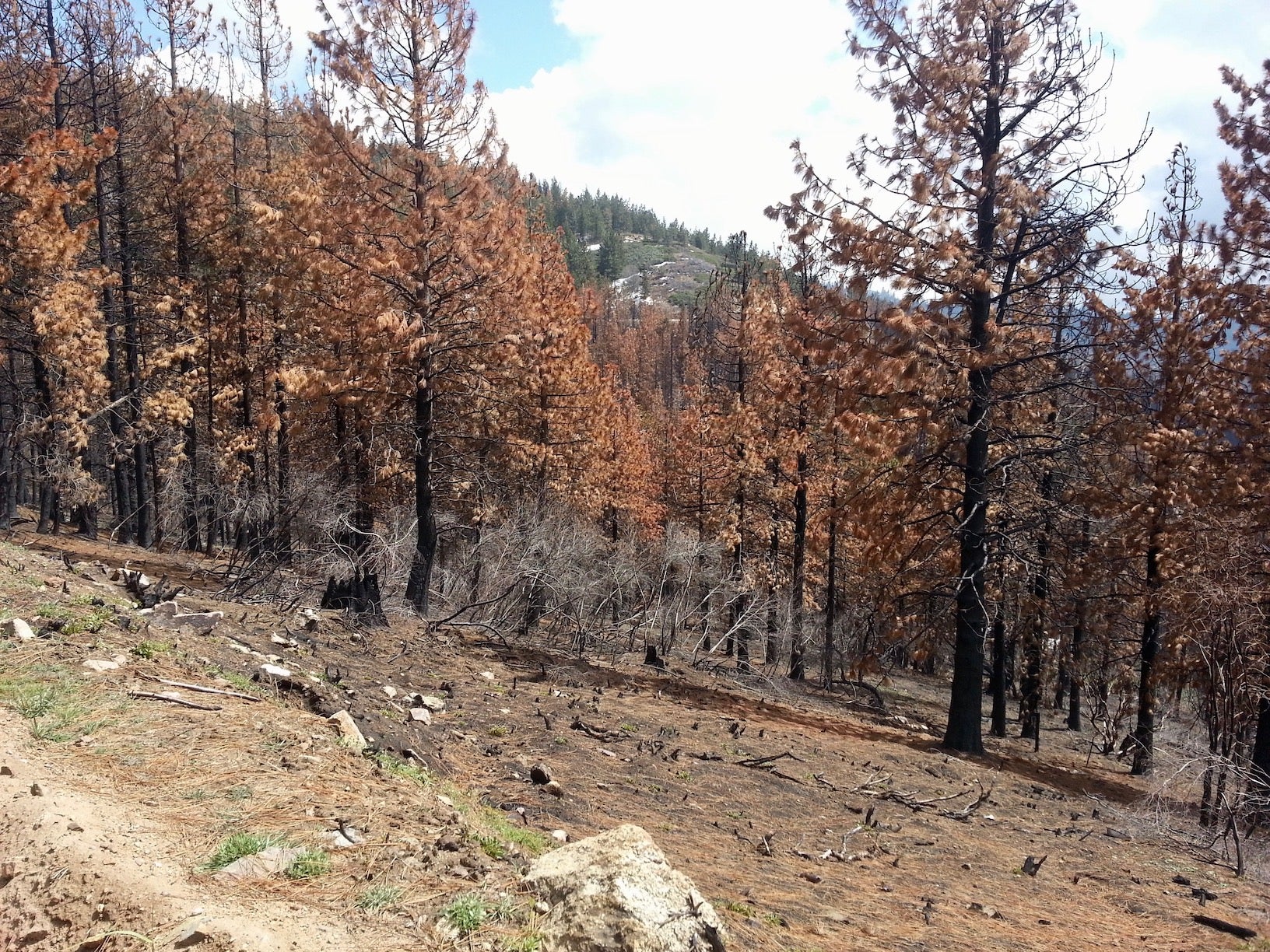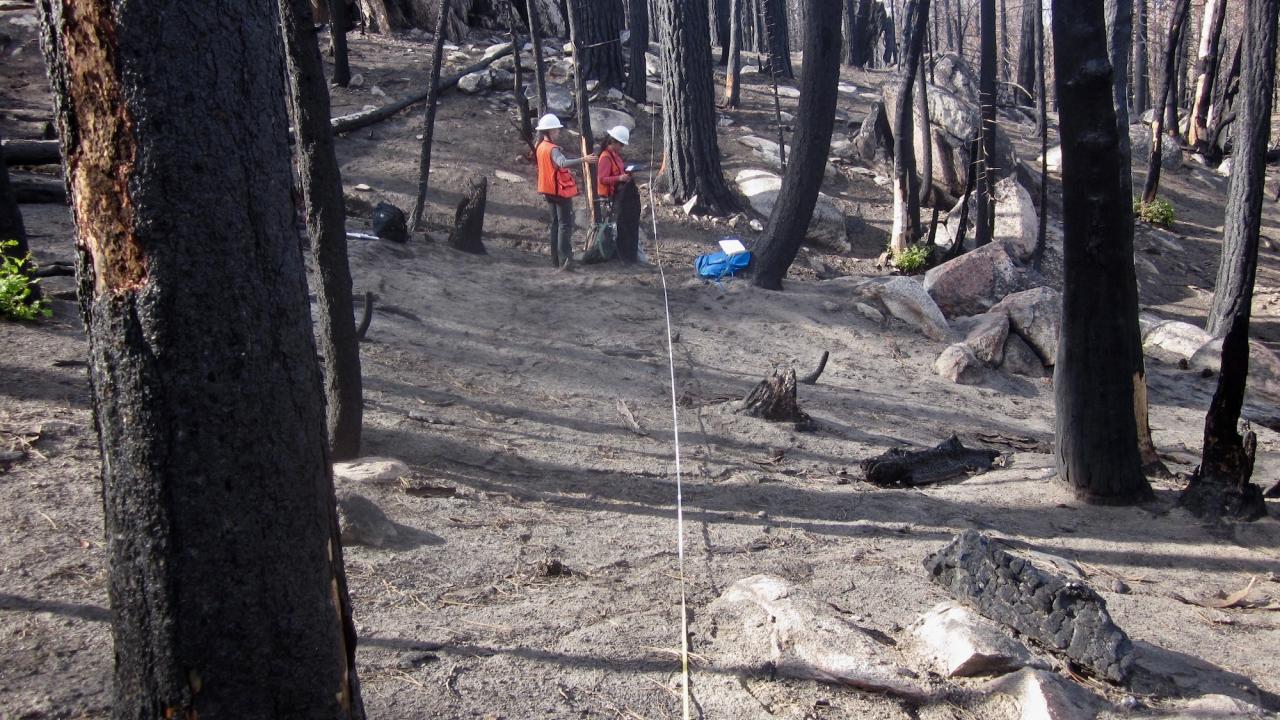California’s drought of 2012-2016 killed millions of trees in the Sierra Nevada — mostly by way of a bark beetle epidemic — leaving a forest canopy full of dry needles. A study published from the University of California, Davis, and the U.S. Forest Service helps answer concerns about what effect dense, dead foliage could have on subsequent wildfires and their burn severity.
In the study, published in the journal Ecological Applications, scientists found that the presence of recently dead trees on the landscape was a driver of wildfire severity for two large fires that occurred toward the end of the drought: the 151,000-acre Rough Fire in 2015 and the 29,300-acre Cedar Fire in 2016.
The publication is the first field-based study to document the important role recently dead trees can play in exacerbating fire severity in California forests that are historically adapted to frequent, low-severity fire.

Climate change and forest management
The study highlights the importance of forest fuels, in addition to climate change, as a strong driver of fire severity in Sierra Nevada forests.
“We’ve long known that both fire weather and forest fuels can influence wildfires, but it was unclear whether recently dead trees would change conditions enough to alter fire severity,” said lead author Rebecca Wayman, an associate specialist of forest and fire ecology in the UC Davis Department of Environmental Science and Policy. “We found that the dead trees did increase fire severity, even though these fire-suppressed forests were already at risk of unnaturally severe wildfire prior to the drought.”
It wasn’t drought alone that killed millions of trees, Wayman noted. A prolonged, hot drought hit forests that were overly dense and water-stressed due to more than a century of excluding wildfire and Indigenous fire from the landscape. This resulted in a bark beetle outbreak that was unprecedented in the Sierra Nevada.
Fortunately, the same strategies commonly used to reduce the risk of catastrophic wildfire — thinning and prescribed fire — also can reduce the severity of future bark beetle epidemics.
“It’s a win-win to restore forests to healthier, less-dense conditions, especially as they face hotter and drier climate conditions that promote both wildfire and bark beetle attacks,” Wayman said.
Disturbance brings shifts
For the study, the researchers collected data on 180 plots within the Rough Fire and Cedar Fire footprints, located in the Sierra and Sequoia national forests, and the Giant Sequoia National Monument. It identified pre-fire tree mortality as influential on all measures of wildfire severity on the Cedar Fire, and on two of three measures on the Rough Fire. For the Rough Fire, it was the most important predictor of trees killed by fire. For the Cedar Fire, weather conditions during burning had the strongest influence on fire severity.
The dual disturbances also shifted the pine-dominated system of the Rough Fire study area to a cedar/pine/fir system, which is less well-adapted to wildfire. Dominant species remained unchanged in the area affected by the Cedar Fire, which was already dominated by fire-sensitive species.
Pre-fire tree mortality may have a greater influence on fire when weather conditions are mild compared to when high temperatures, low relative humidity and high winds can drive extreme wildfire behavior, the study indicated.
“The question of how two profound disturbances — drought and fire — interact to affect California forests is an important one,” said co-author Hugh Safford, regional ecologist for the USDA Forest Service’s Pacific Southwest Region and an adjunct member of the research faculty at UC Davis. “Current and projected future trends suggest that this sort of double-whammy will become more and more common as the 21st century progresses and the climate continues to warm. Our study helps us better understand how California forests are impacted by two extreme events in close proximity in time and how we might change these impacts with proactive management.”
The study was funded by the USDA Forest Service Pacific Southwest Region.
Media Resources
Rebecca Wayman, Environmental Science and Policy, 530-401-0471, rbwayman@ucdavis.edu
Kat Kerlin, News and Media Relations, 530-750-9195, kekerlin@ucdavis.edu
